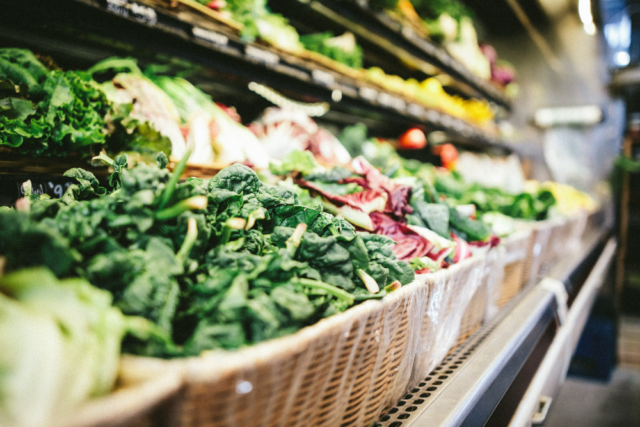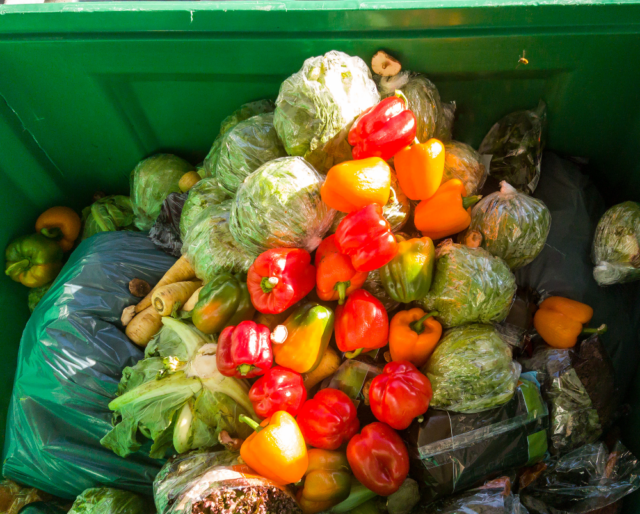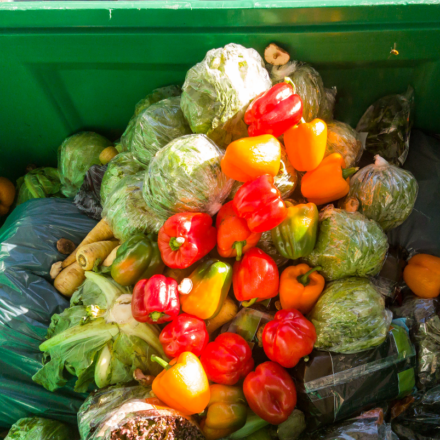Managing fresh produce in a grocery store can be a delicate balancing act. You want to stock enough carrots, strawberries, lettuce and other produce to meet demand. But if you order more than what customers want, you might end up with rotten food and incur losses.

Heinen’s—an upscale Midwest grocery chain with stores in Ohio and Illinois—is finding the perfect balance via artificial intelligence (AI). The regional chain has deployed an AI-powered, store-level replenishment system to run its fresh produce department across its 23 stores. The forecasting, inventory and ordering system, says Jeff Heinen, co-CEO of Heinen’s, “enables us to deliver on the promise of the freshest food and the best in-stock rate.”
By better managing its fresh food, Heinen’s has seen annualized savings of $1 million and reduced “shrink,” or the costs associated with throwing out rather than selling fresh fruits and vegetables.
Managing orders and measuring demand for fresh food at the store level is a big challenge and can cost grocers millions of dollars, says Matt Schwartz, CEO and co-founder of Afresh, the San Francisco-based startup that built the ordering system streamlining Heinen’s fresh produce department. “This is a new operating system to help grocers drive transformation in their fresh food departments and make their food operations more efficient, reduce food waste and multiply their profitability,” he says.
According to Schwartz, their AI system “will do much than increase profits of fresh produce departments.” His ultimate goal is much bigger: Reduce food waste. The U.S. Department of Agriculture estimates food waste at between 30-40% of the U.S. food supply. More than a third (35%) of all food in the U.S. went unsold or uneaten in 2019, according to ReFed, a nonprofit organization working to end food loss and waste across the food system. Their calculations peg this at $408 billion worth of food—about 2% of the entire U.S. GDP.
Fresh-first technology
Afresh uses AI and machine learning algorithms to optimize against the complex dynamics of every fresh item to generate optimum order recommendations. “It sounds simple, but deciding how many broccoli heads to buy on any given day can be very complicated. There are so many variables,” says Schwartz. To begin with, grocers need to know the number of heads of broccoli in the store and the remaining shelf life for each piece. Next, they need to forecast the demand for broccoli over a relevant time horizon. They also need to consider shipment frequency and shelf life of broccoli, holding power of the shelf, current and planned promotions and labor availability.
“It’s not just the number of variables. They need to understand the interactions of all these factors to optimize the number of heads of broccoli they should order,” he says. Afresh’s system performs several tasks, such as inventory estimation, demand forecasting, order optimization, and labor utilization, in concert to determine the right number for hundreds of fresh produce items.
It sounds simple, but deciding how many broccoli heads to buy on any given day can be very complicated. There are so many variables.
—Matt Schwartz, CEO and co-founder of Afresh
While digital ordering technology isn’t new to retail, Schwartz insists that grocery ordering systems were built for non-perishable items and break down in produce aisles. “Almost every aspect of fresh food is different. A head of broccoli or salmon fillet is radically different from a box of Cheerios that come in boxes with barcodes,” he says. “Also, assortment changes regularly as opposed to a six-month cycle in the rest of the store. Several varieties and seasonality further add to the complication,” he says.
This complexity of ordering fresh food is what prompted Schwartz and his co-founders to create Afresh’s technology. “Fresh food is the most strategic part of the food industry. Yet, it’s so underpenetrated by technology,” he says and recalls how produce managers at most grocery stores would go into the backroom, count inventory for each item, and write orders every day with pen and paper before scanning their order sheet and submitting it to their warehouse.

Afresh’s system piggybacks on the grocers’ existing systems to ingest sales, pricing, and shipment data and then compiles it into a single place that a retailer writing an order can view from a tablet. Workers using Afresh’s front-end tool periodically count inventory by hand, which helps train the AI-driven model. “It understands when it needs help. The adaptive system runs autonomously when it can and leverages human labor in the stores when it can’t,” adds Schwartz.
They have built a confidence scoring system to assess the quality of the input data on a daily basis. Whenever the data quality score is low, the system prompts the user to manually enter what they believe would be the right amount to order for their store. Sometimes, produce managers need to manually override the automated recommendations when they notice events, such as a tailgate party at a local football game or a new recipe in the town newspaper. “These events are not captured in any of our data streams but can significantly impact the fruit and vegetables in demand in a specific store at any given time,” says Schwartz.
The battle against food waste

While Afresh enables grocery stores to run their fresh produce departments profitably, Schwartz’s eyes are set on his long-term mission to eliminate food waste and make it accessible to all—“Afresh has already eliminated 6.9 million pounds of food waste, and the number is growing multiplicatively.”
Founded in 2017, the San Francisco headquartered Series A startup today helps grocery retailers like Heinen’s, Winco, Fresh Thyme and the SaveMart Companies order billions of dollars of perishables every year and claims to reduce food waste by 25% while reducing out-of-stocks by 80%. They are now working to expand the AI-powered inventory tool to other fresh departments in grocery stores, such as meats and seafood, prepared foods and baked goods. “We will also extend our solution to the distributor center level,” he adds.
Afresh is not alone. Several other tech startups are aspiring to make fresh food available to all. “We will see a massive infusion of technology and innovation into the fresh food supply chain, and that will bring down costs and increase access to food,” he says. And his long-term aspiration for Afresh is to be the brain or the operating system that connects all types of fresh food technologies, from vertical farms to shelf-extension tools and cold-chain tracking. “Our vision is where a carton of strawberries is as accessible as a bag of chips, and where everyone can enjoy fresh, nutritious food in a way that is sustainable for our planet.”
Lead photo courtesy of Shutterstock

